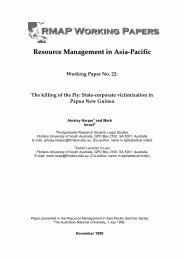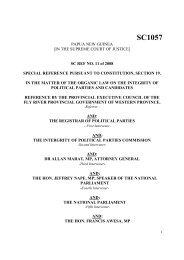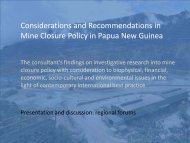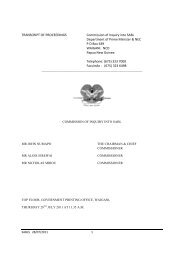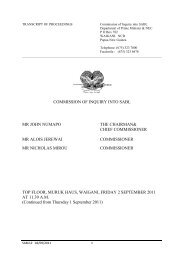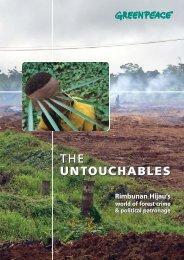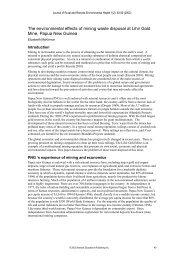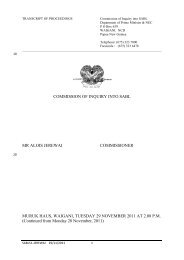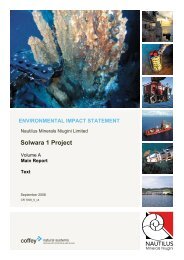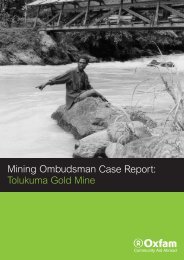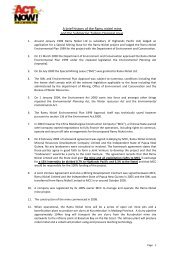Fishy business. The Social Impact of SST.pdf - Act Now!
Fishy business. The Social Impact of SST.pdf - Act Now!
Fishy business. The Social Impact of SST.pdf - Act Now!
You also want an ePaper? Increase the reach of your titles
YUMPU automatically turns print PDFs into web optimized ePapers that Google loves.
Waste treatmentEvery bit <strong>of</strong> fish waste from the factory is washed down into a huge drain in the centre <strong>of</strong> thefactory and piped out to the treatment plant. <strong>The</strong> water is treated and discharged into a hugetank and later piped out into the sea 800 metres away from shore. According to laboratory tests,the water discharged is safe and does no harm to marine life or local fishermen/women.<strong>The</strong>human waste from the treatment plant is piped into a huge tank and later piped out into a slushboat which carries it away 5-8 miles away from the shore and discharge it into the sea.“<strong>The</strong> smell is really killing you the moment you enter the factory gate,” One informant said.It comes from the treatment plant, where waste is treated and separated from water to bedischarged into the sea. <strong>The</strong>re is no covering to the waste and when the wind blows the smell iscirculated out to Wewak town. Nothing will be done about the smell because the <strong>SST</strong> rep says itis ‘industry standrad’ safe. According to the lab technician, Sumanup says, <strong>SST</strong> has passed USstandards for microbes and chemicals in the wastes discharged. <strong>The</strong>y have two separatelaboratories, one for microbiology lab and one for chemistry. <strong>The</strong> laboratory technicians checkfor microbes and chemicals in the fish as well as the waste waters. “<strong>The</strong> technician was reallyconvincing in the way he was explaining his wonderful idea.”<strong>The</strong> fish waste is the tail and the head <strong>of</strong> the fish including the intestines and gills, and it isprocessed into stock feed and exported to Sydney. <strong>SST</strong> also sells the fish stock feed to the DPIat a discount price where they mix it with other feed to break down the high concentration <strong>of</strong>protein (16%). <strong>SST</strong> asks the DPI to sell it to local farmers at the reasonable price, but DPI doesnot comply and they sell it a very high price to local farmers.Fishing<strong>The</strong>re are two species <strong>of</strong> tuna they catch for lonning, skipjack and yellowfin. <strong>The</strong> fishing is donein the northern waters which is a breeding ground for tuna. Surplus catch is stored away in thecooler room which is -25 Degree Celsius. <strong>SST</strong> does not need the bycatch species so sells it toWewak Fisheries at a reasonable price, and the Fisheries then sells it to people in town.An electric net is used to catch the fish. It was not explained how safe it is for the people to eatfish caught using the electric net. People have said that the fish are already bad when thefisheries <strong>of</strong>ficers sell to people in town, though. Maria says, “I have bought some fish at the86



